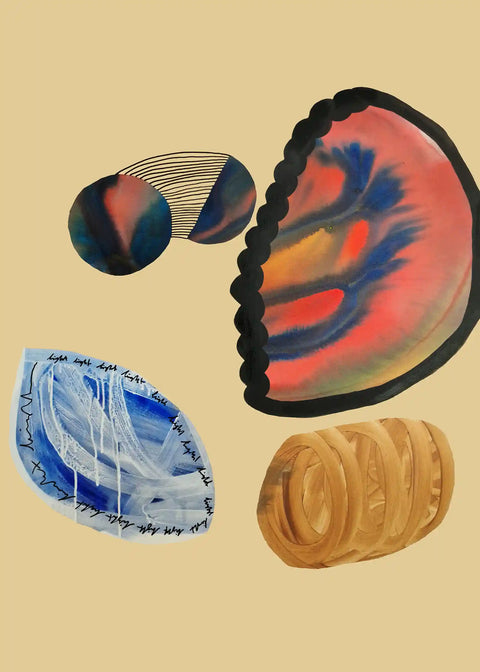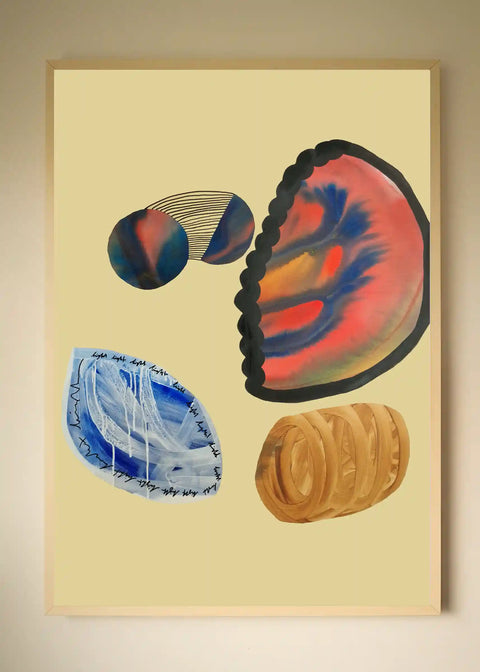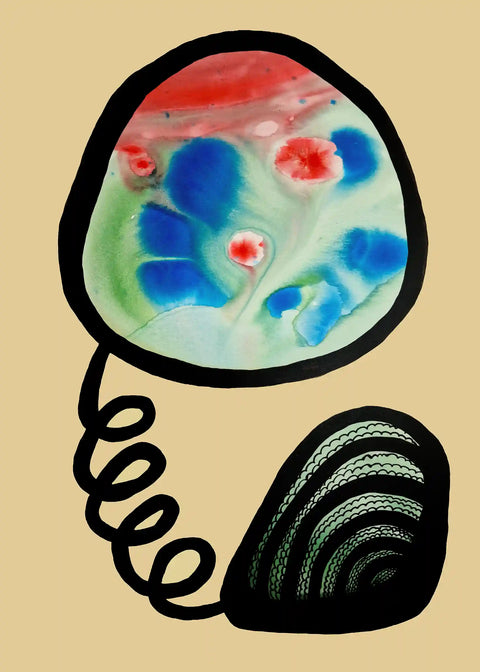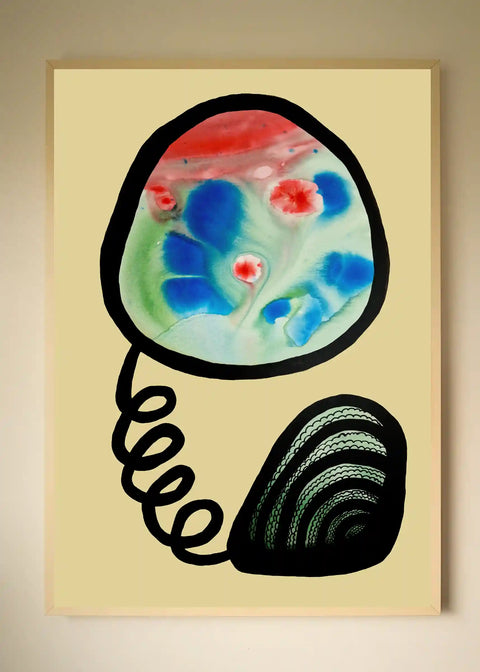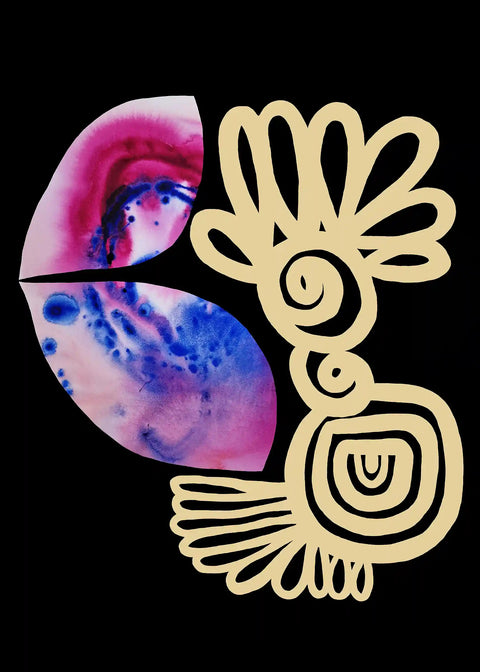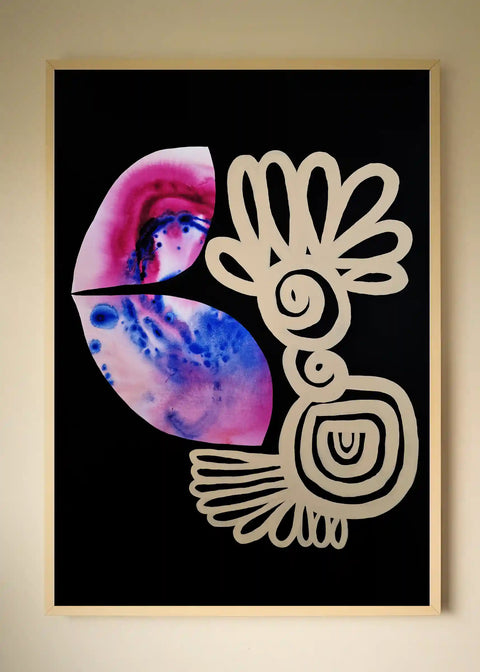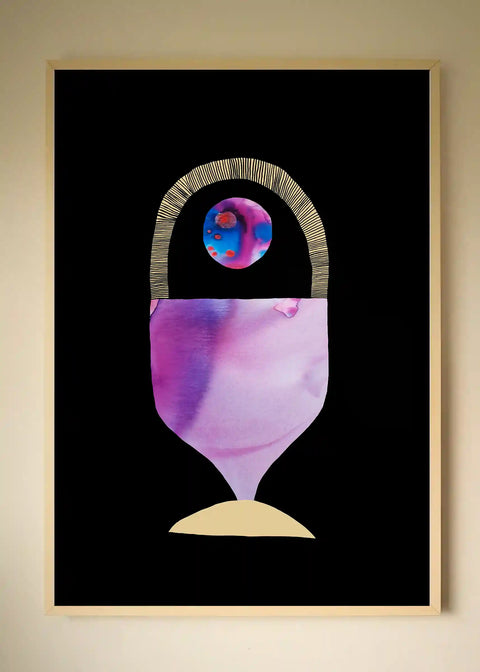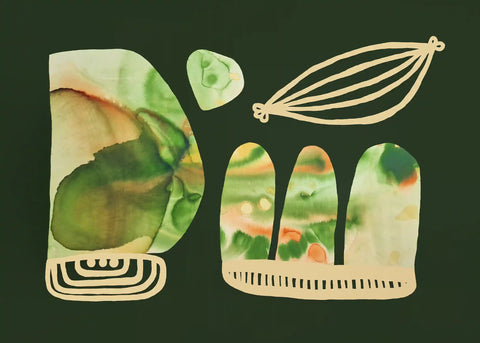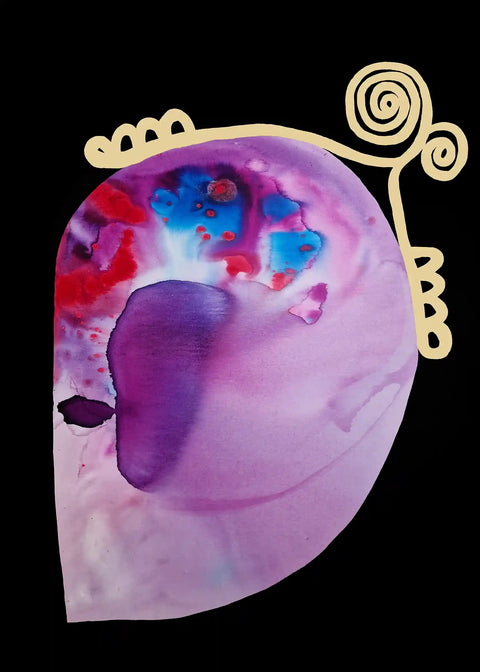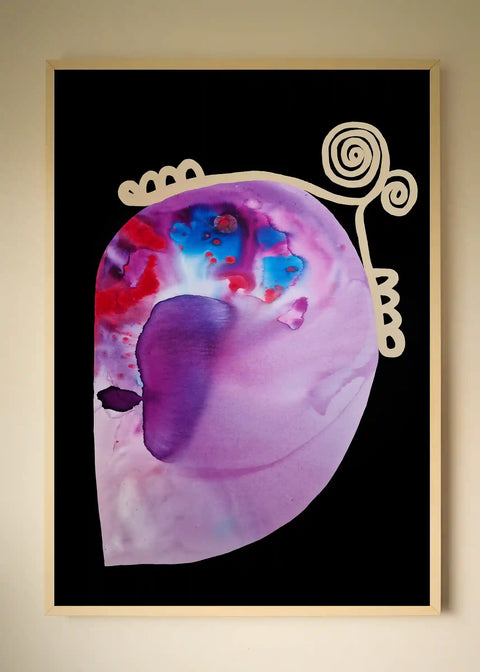
Interview with artist Saba Tadale
Could you introduce yourself?
My name is Saba Tadele Gebrewold, and I'm a multidisciplinary artist based in Stockholm, Sweden. I work with paintings, I do photography, and I also write poetry.
What would you say inspired you to become a visual artist and how has your journey evolved since then?
I often say that art has been part of my DNA way before I was born. I come from two different cultures: Ethiopian on my father's side and Afghan on my mother's. On my mother's side, there's been a lot of influences from Persian poetry. A lot of my relatives and my lineage have been working with their written word through poetry. On my father's side, he used to paint as a kid. He has a brother too who was a visual artist, and my father began his artistic journey when he was six years old. He used to sell traditional Ethiopian paintings of the Queen of Sheba on the streets of Addis to provide for his family. That's how I got my name, Saba.
Somehow art has always been a part of my upbringing. I remember the smells of oil paints growing up in Malmö. He was always very keen on making sure that we saw different types of art forms. He took us to exhibitions and art fairs at a very young age. That's how it evolved at a young age. In 2014 I started painting. Before that, I did music, not so much visual creation but mostly music. Then it just evolved to visuals. I started with painting and then photography, and then I started writing. That was when I lived abroad. That's how it evolved through the years.
Can you describe your creative process from the initial idea to the finished artwork?
I usually don't have an idea when I start. My process demands openness. I often say that my process is a conversation with God. It's very spiritual. It's very intuitive. The first layers are very open. I let the paint lead me, and my intuition needs to be open. If I'm in a fearful state, I usually step back and get back to the paintings later on. The process needs clarity. That's why I feel like my art studio is a sanctuary for me to work through those emotions.
Do you work on one painting at a time?
No, I usually work with multiple pieces at a time. When I get stuck with one piece, I go to another. The creative process, the blocks, I don't put much emphasis on that. I just let myself lead to other pieces. I usually work with a lot of layers. What you see might be eight to ten layers. I usually know when it's done. If it's not done, then I just continue. I can paint it over and then start a new one.
What themes or messages do you aim to convey through your art?
I work a lot with emotions. My art is always a reflection of the times we're living in. Even though I paint abstract art, there are a lot of layers to it. I have a background in political science, so I'm also very inspired by liberation movements, by indigenous cultures. I'm inspired by everything, by life, by creation.
How do you hope it resonates with your audience?
When people see abstract art, they don't really know how to process it. It's as if you have to feel a certain way. You have to understand my process in order to comprehend what you're seeing. I hope my art awakens something in every person who sees it. That's very personal for every person. I want people to be open. Open sides of them that maybe you're not always in tune with.
Could you share some of the challenges you faced in your artistic career? How did you overcome them?
As I said, it's a very intuitive process. It's also a spiritual process. For me, mostly, what I struggle with is clarity. When I paint, I want to have a clear mind. Somewhat a clear mind, in order for intuition to lead me. I do meditation and prayer. It's a very intimate process. For me, it's mostly finding peace within myself to create these artworks.
Are there any particular artist styles or movements that have influenced your work? If so, how have they shaped your artistic vision?
When it comes to artists, I'm inspired by many. I love a lot of artists on the African continent. Also, one of my favorites is Tadesse Mesfin. He's an Ethiopian artist. He's much older than me, but I look up to the artists that came before me. I'm also very inspired by indigenous cultures, patterns, fabrics, and sculptures. I'm inspired by nature. I always say the greatest inspiration is creation itself. I'm out in nature a lot. A lot of my palettes are from creation, from nature. That's where I find my peace and where I inspire.
Your way of working with colors, composition, and contrast feels very organic. Could you talk a bit about that?
The first layers are very free. I usually work with a lot of fluids. I let them just mix in an organic way. Then when it comes to the top layers, I start to constrain it. That's where I create the contrast. But even the top layers are never really thought through. I don't have a clear end goal, even though it looks like it. I always allow the art to speak for itself through me. I don't plan ahead. Even though some colors work better together, it just comes naturally, I think, for me.
What does inclusion within the art space mean to you?
I truly believe that art is very fundamental to people's lives. We started painting the cave paintings before we even had clothes before we cooked our food. It's very basic to our needs. I think to express ourselves, to have mediums where we can be free to express ourselves. There should not be any obstacles for you to be surrounded by art.

